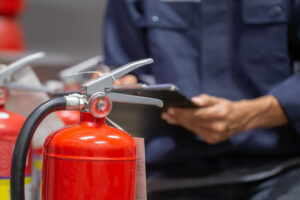Piloting Aircraft Neighborly and Reducing Aviation Noise Pollution
We all know the feeling of peace and serenity that comes with a quiet evening in our own homes. But what happens when aircraft fly over neighborhoods, disrupting tranquility? Aircraft operations can create considerable levels of noise, potentially disturbing residential and recreational areas. This is a particular issue in urban areas, where flight paths often overlap with densely populated neighborhoods. As pilots, we have a responsibility to not only operate our aircraft safely but also neighborly.
The best way to reduce aviation noise pollution is through neighborly operation of aircraft. This means flying at a certain distance from residential areas (depending on requirements of that area), creating soundproofing solutions in airports and planes, limiting the number of flights at night and over densely populated areas, and ensuring that engines are properly maintained to minimize noise pollution.
What Is Aviation Noise Pollution?
Aviation noise pollution is the sound created by aircraft when they are in flight, particularly during takeoff and landing. This noise can be extremely disruptive for those living near airports or along flight paths. Not only can it affect people’s sleep patterns but also cause hearing damage over time.
There are several factors that can contribute to excess noise pollution, such as the type of aircraft, engine size and power, altitude of flight, and even weather conditions. For example, certain aircraft have louder engines than others, while flying at lower altitudes can amplify the noise levels. Additionally, windy days or increased humidity can make the sound wave frequencies more intrusive. Therefore, it’s important for pilots to be aware of these factors when flying over residential areas in order to minimize disruption caused by noise pollution.
Know the Area
Pilots can reduce noise pollution by flying at a specific altitude when near residential areas. This should be done in accordance with local regulations, which generally dictate how far away aircrafts must fly when passing over populated neighborhoods. By adhering to these rules, pilots can help ensure that residents have peace and quiet while they are going about their daily lives. Additionally, it’s important for pilots to avoid flying low across neighborhoods whenever possible as this often results in increased noise levels.
Tips for Reducing Aerospace Noise Pollution
Fortunately, there are a multitude of strategies pilots can employ to reduce aviation noise pollution:
Avoid taking off or landing at night:
When possible, avoid taking off or landing during night hours as this can cause disruption to nearby residents.
Utilize continuous descent approach:
By using continuous descent approach, pilots can keep their engines at a lower power setting for longer periods of time in order to reduce noise emissions from their aircraft.
Fly at higher altitudes when possible:
Flying at higher altitudes allows for the engine noise to be defused over a wider area, reducing the amount of noise heard by those on the ground.
Monitor engine power settings carefully during approaches and departures:
Pilots should monitor their engine power settings carefully during approaches and departures in order to reduce the amount of noise generated by their aircraft while still ensuring a safe flight operation.
Adjust flight path with respect to wind direction:
Wind directions can affect the way sound is carried. By adjusting flight paths accordingly, pilots can minimize the amount of noise propagation from their aircraft that reaches people living near airports and flight routes.
Additionally, governments may adopt legislation that decreases aviation noise pollution by providing incentives for airlines and airports to invest in new technology that produces less noise.
What’s Next?
We all have a vested interest in ensuring that our communities remain safe and sound – so let’s do our part to reduce noise pollution caused by aircraft flying over residential areas. By keeping noise levels down, we can help create more peaceful neighborhoods and ensure that no one is affected by excessive noise pollution. Pilots have an important role to play when it comes to reducing aviation noise pollution – and with these strategies, they can make a real difference! Working together, we can make a difference.
RELATED READING
RELATED CTS TRAINING










